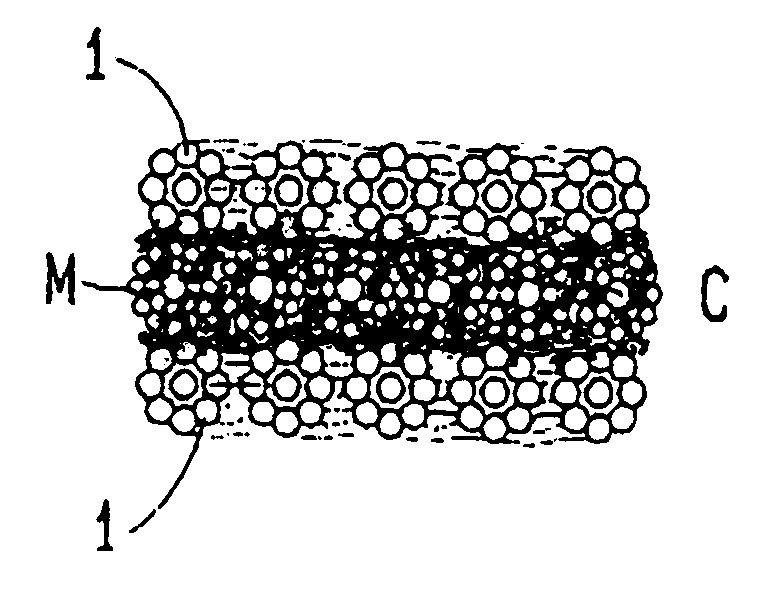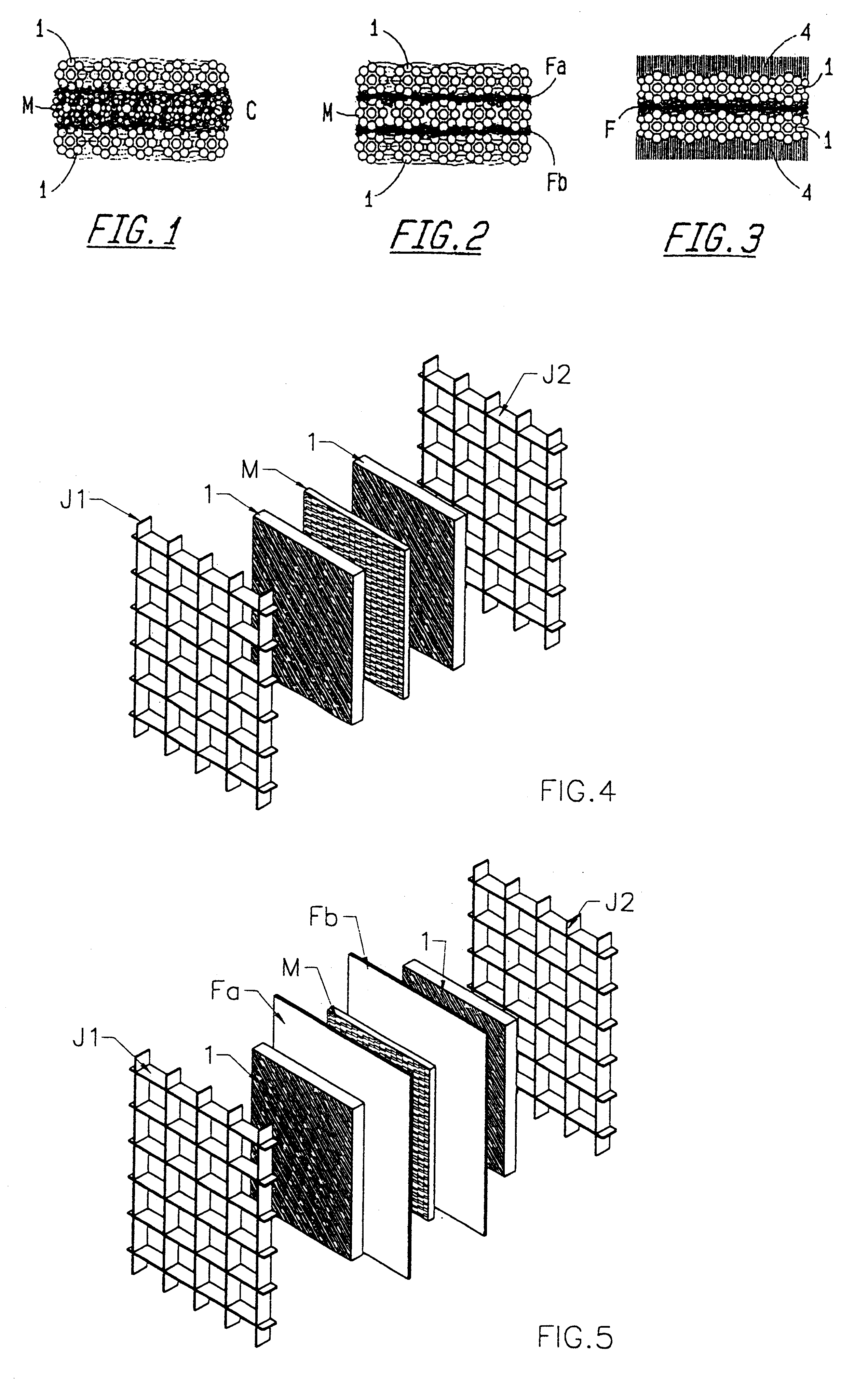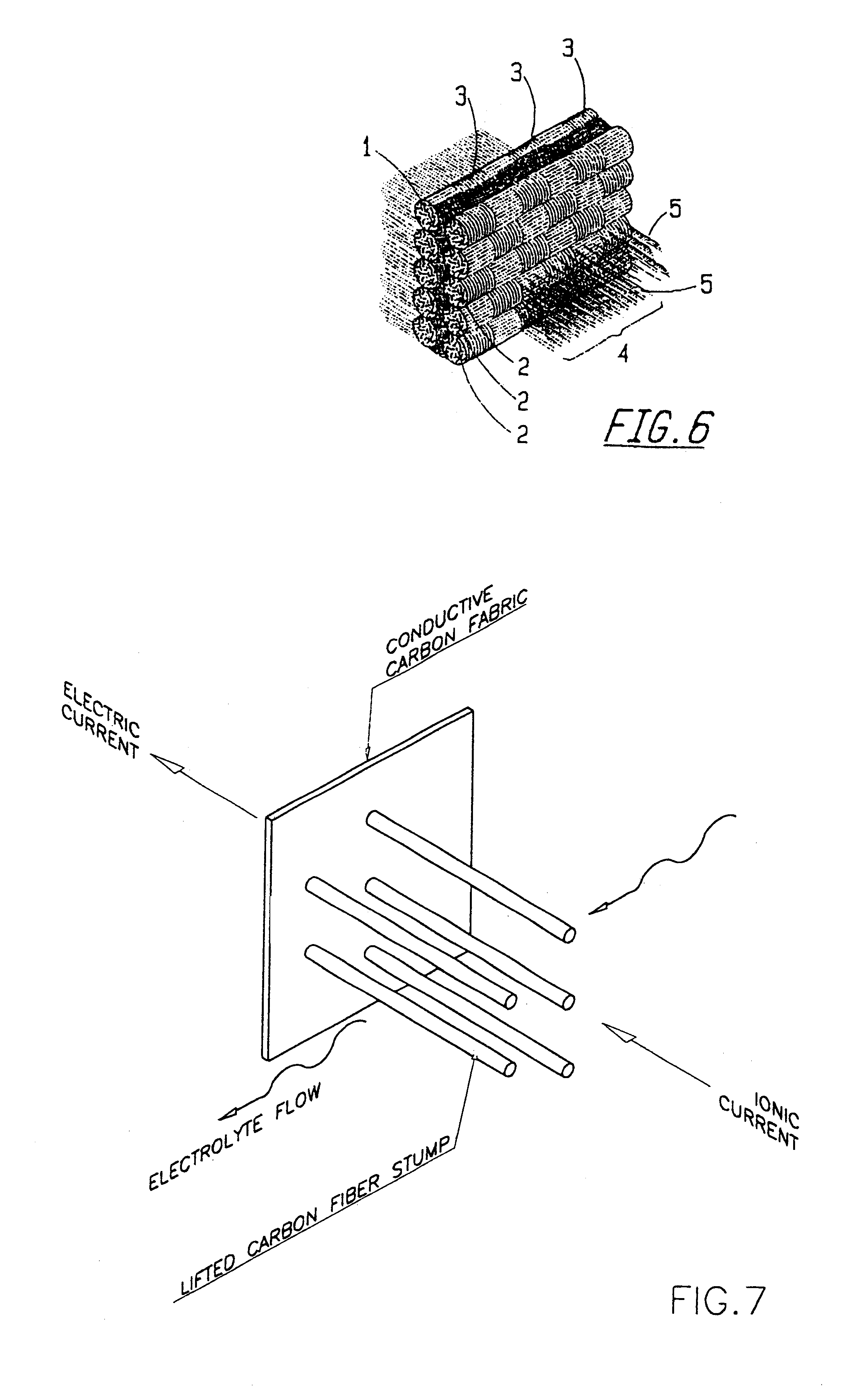Bipolar electrode for electrochemical redox reactions
- Summary
- Abstract
- Description
- Claims
- Application Information
AI Technical Summary
Benefits of technology
Problems solved by technology
Method used
Image
Examples
Embodiment Construction
It should be remarked that the following description of several preferred embodiments is not intended to limit the scope of this invention as defined in the annexed claims, but has a purely illustrative purpose in order to facilitate the practicing of the invention by any person skilled in the art.
FIG. 1 shows a cross section of a carbon-base bipolar electrode made according to a first embodiment.
In the figure are recognizable three distinct fabrics of carbon fibers or of yarns of carbon fibers stacked in a sandwich arrangement. The central or matrix fabric M has a relatively tight weave as compared to the outer fabrics 1 that are identical and have a relatively open (loosely woven) weave so as to be readily permeated by the electrolyte. Alternatively, the two outer fabrics 1 may be unwoven mats or felts of carbon fibers also having a relatively open structure as to be readily permeated by the electrolyte.
The matrix layer M is hydraulically sealed by practically filling all intersti...
PUM
| Property | Measurement | Unit |
|---|---|---|
| Diameter | aaaaa | aaaaa |
| Diameter | aaaaa | aaaaa |
| Pressure | aaaaa | aaaaa |
Abstract
Description
Claims
Application Information
 Login to View More
Login to View More - Generate Ideas
- Intellectual Property
- Life Sciences
- Materials
- Tech Scout
- Unparalleled Data Quality
- Higher Quality Content
- 60% Fewer Hallucinations
Browse by: Latest US Patents, China's latest patents, Technical Efficacy Thesaurus, Application Domain, Technology Topic, Popular Technical Reports.
© 2025 PatSnap. All rights reserved.Legal|Privacy policy|Modern Slavery Act Transparency Statement|Sitemap|About US| Contact US: help@patsnap.com



